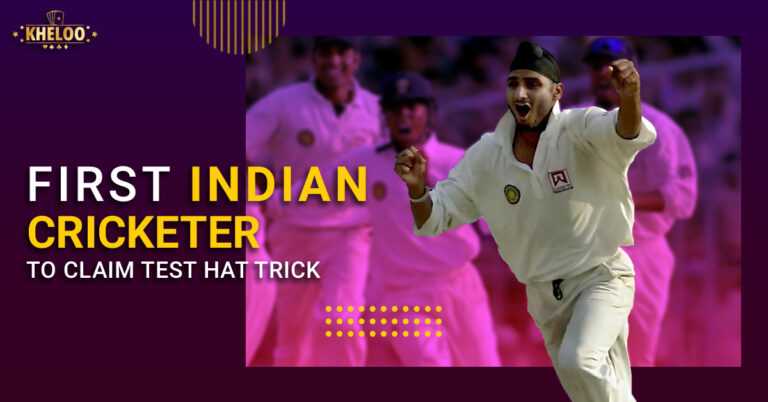Transport yourself back in time to the extraordinary cricketing moment that etched Harbhajan Singh’s name into the annals of Test cricket history. It was March 11, 2001, during a high-stakes clash against Australia in the prestigious Border-Gavaskar Trophy, where Harbhajan, affectionately known as the “Turbanator,” achieved an awe-inspiring feat – becoming the very first Indian bowler to claim a hat-trick in Test cricket. This remarkable achievement not only left cricket enthusiasts across the globe awestruck but also forever etched Harbhajan’s name in the pantheon of cricketing legends.
The Indian cricket team faced a daunting challenge against the formidable Australian side, led by the renowned Steve Waugh. The Australians were determined to extend their world record of 16 consecutive Test wins and secure their first series victory in India since 1969. India, already trailing after losing the first Test at Mumbai’s Wankhede Stadium, faced additional adversity with injuries sidelining their star bowlers Anil Kumble and Javagal Srinath.
Australia won the toss and elected to bat on a flat pitch. Their opening batsmen, Michael Slater and Matthew Hayden, built a solid partnership of 103 runs before Slater was dismissed for 42. Hayden and Justin Langer continued to dominate, but then Indian captain Sourav Ganguly reintroduced Harbhajan Singh into the attack.
The young off-spinner made an immediate impact by dismissing the dangerous Hayden, who fell agonizingly short of a century by just three runs. Harbhajan then claimed the crucial wicket of Mark Waugh. Despite these breakthroughs, Australia seemed to be comfortably positioned at 254/4 during the final session of the day.
But Harbhajan had different plans. With remarkable skill, he went on to dismiss Ricky Ponting, Adam Gilchrist, and Shane Warne in consecutive deliveries, completing his historic hat-trick. Ponting and Gilchrist were both trapped in front of the stumps, while Warne’s tentative shot found Sadagoppan Ramesh at short leg, who completed a fair catch confirmed by the third umpire. The atmosphere at Eden Gardens, with nearly one lakh Indian supporters, erupted in joy and celebration.
Harbhajan concluded the innings with impressive figures of 7/123, playing a significant role in limiting Australia to a total of 445 runs. This hat-trick was a huge moment for Harbhajan, getting him huge recognition and imparting belief in his skills to perform against the best teams in the world.
Also Read: ICC world test championship final 2023 AUS vs IND Schedule
After this success, Harbhajan said that, “It was a very special time in my life. That hat-trick brought me recognition and a strong belief that I could excel at the highest level against top teams. If this is possible against world-class players, I could try this with other teams.” This achievement made a huge difference in Harbhajan’s career, earning the trust and confidence of his teammates and followers.
Despite struggling in the first innings, where they were bowled out for 171, India showcased tremendous resilience in the second innings. A historic partnership of 376 runs between VVS Laxman (281) and Rahul Dravid (180) set a daunting target of 384 for the Australians to chase on the final day of the second Test.

Although the match appeared to be heading for a draw with Australia at 166/3, a dramatic collapse in the final session saw them lose seven wickets for a mere 56 runs. With a stunning 171-run victory, India leveled the three-match Test series 1-1. This triumph not only halted Australia’s remarkable winning streak but also made India only the third team in Test history to win a match after being forced to follow-on.
Also Read: WTC Final 2023 Commentators Dinesh Karthik
The two other Indian bowlers, after Harbhajan Singh are Irfan Pathan and Jasprit Bumrah, who got to accomplish the big achievement of taking a hat-trick in Test cricket.




Comments are closed.